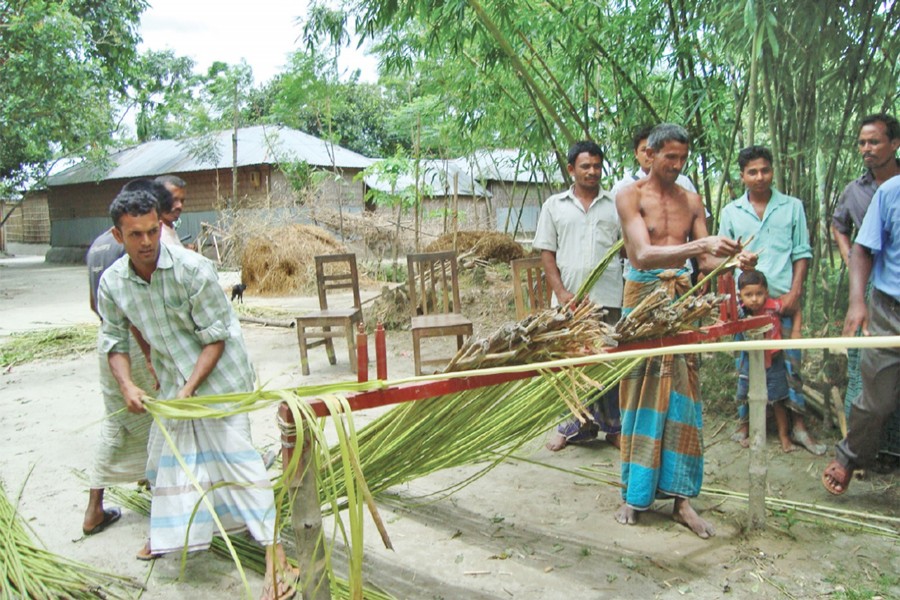Retting of Jute:
- Retting is the process of aerobic and anaerobic microbial activity by which the fiber in the bark gets loosened and separated from the woody stalk.
Retting of Jute can be carried out by 2 processes:
- Stalk retting and
- Ribbon retting
a. Stalk retting:
- Done in shallow canals with slow water current or in tanks.
- Harvested jute bundles are kept standing in 30-60 cm water for 3-4 days before the entire bundle is steeped.
- Then the bundles are laid side by side usually in 2-3 layers, tied together and placed 10 cm below the surface of water with a concrete block or logs.
- Covered with water hyacinth or any weed that doesn’t release tannin.
- The float is than weighed down with seasoned logs or with concrete blocks or are kept submerged at least 10 cm below the surface of water.
- Retting is best done at 34°C.
- At the end of the eight days onwards, the reeds (stems) are to be examined.
- If fiber slips out easily from the wood on pressure from the thumb and fingers, retting is considered complete.
b. Ribbon retting:
- Main principle is to separate the barks from the stem before steeping in water.
- The separated barks are tied in bundles and submerged in water for retting.
- For accelerating retting in tanks, 1 kg urea is added for each 4 quintals of green barks.
- Checking of retting should be started after 7-8 days of submergence.
